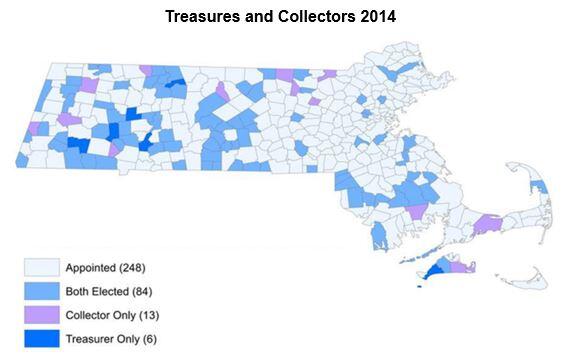Author: Financial Management Resource Bureau
The DLS Financial Management Resource Bureau (formerly the Technical Assistance Bureau) has offered financial management advice to municipalities across the state for over 30 years. To share this guidance more broadly, we thought it would be helpful to highlight some of our more useful, timely, or interesting recommendations for the benefit of City & Town readers.
As municipal governments evolve, communities should periodically review their governmental structure and departmental operations. Changes to the authorities vested in chief administrative position, the size of the select board, consolidating department operations like publics works, or moving from elected-to-appointed officials are often part of such studies. Below are several recent examples highlighting such changes to local government structures:
- Charter – A charter creates a framework for how the whole government is organized, who is appointed or elected, and dictates all reporting structures. The operation is then further defined with a mixture of ordinances or bylaws. Traditionally, adopting or changing a charter is accomplished by a charter commission (MGL 43B). Recently, Framingham shifted to a mayor-council structure (2018) and North Attleborough (2019) adopted its first charter establishing a manager-council government. Some communities have established original charters by special legislation, including Brewster (c. 396 Acts of 2022) and Plainville (c. 310 Acts of 2020), while others amend their charters by special act.
- Chief Administrative Position – In the face of growing complexities in government, most towns have hired a chief administrative officer. Currently, 254 of 292 towns, or 87%, have a professional position with job titles including town administrator, town manager, chief administrative officer, executive director, or general manager. Responsibilities typically include supervising daily operations, budgetary & financial oversight, and personnel administration. As a matter of best practice, the chief administrative officer position should be codified in bylaw at a minimum, whereas a special act or charter is required for delegating statutory responsibilities and greater degrees of authority such as hiring and firing staff and signing the warrant. Examples include Tyngsborough’s town manager position (c. 342 Acts of 2022) and Berlin’s selectmen-town administrator form of government (c. 384 Acts of 2018).
- Select Board Membership Size – Currently, there is an equal balance between traditional three-member boards and larger boards. However, larger boards can offer broader representation of viewpoints reduces risks of dominating biases, and open meeting law violations. Towns that recently increased the select board size include Northfield (c. 136 Acts 2019) and Arlington (c. 434 Acts 2018).
- Consolidated Departments – As a matter of best practice, DLS recommends combining or consolidating staff and operations that have parallel responsibilities. These new departments enable the community to coordinate core functions, enable better coverage for peak workloads and employee absences, collaborate on long term planning, use resources effectively, and provide competitive edge in recruiting and maintaining well-qualified managers. Recent consolidations include Dennis’s municipal finance department, Cheshire’s treasurer/collector (annual town election May 2022), Rehoboth’s treasurer/collector (c. 101 Acts of 2021), and Plainville’s department of public works (c. 3 Acts of 2016).
- Elected-to-Appointed Officials – As municipal positions grow in responsibility and required skillset, communities are turning to appointed positions to attract a wider pool of candidates with strong credentials and relevant professional experience. Converting an elected role also provides the opportunity to define job requirements and reporting structure, specifying clear expectations of the position and its relationship with management and other team members.
Over the years, various officials have been changed to appointed and/or elected boards were abolished with the oversight shifted to the select board. Examples include Groton’s town clerk (c. 41 Acts of 2022), Medway’s assessors (c. 61 Acts of 2020), and Hardwick’s sewer commission (c. 372 Acts of 2022). The most common change is to the positions of treasurer and collector because these positions require extensive knowledge and are essential members of the community’s financial management team. As seen in the 2014 and 2023 maps, the appointment of both the treasurer and collector has increased from 248 communities in 2014 to 308 to date, or a 24% increase.
Just since the end of March, four communities posed government structural changes to voters. Ludlow voters approved two questions on the annual town election ballot, including having the select board act as the board of public works and converting the elected collector and treasurer roles into a combined, appointed position. In accordance with MGL Chapter 41, Section 1B, Belmont, Swansea, and Milton voters also approved the conversion of the elected treasurer/collector to an appointed position at the annual election. Pending state approval of a recent home rule petition, Westwood will also operate with an appointed combined treasurer/collector.
DLS encourages communities to periodically review their governmental structures and how they are organized. The ever-increasing complexities of municipal government and finances, along with community demand for accountability and professionalism, make it progressively more important for cities and towns to reflect on ways to improve their operations and efficiencies.
To do this, we suggest that the community appoint a government study committee to evaluate the current structure. As a matter of best practice, the committee should be made up of individuals with varying backgrounds, who will approach the study as an open fact-finding mission without any predetermined agenda. They should interview committees and departments, survey residents, and investigate other community and organizational structures and the means by which they were constructed and adopted. Through this process, the committee would find what works well, what is worth preserving, and where changes should occur. At the completion of its review, the committee would report its recommended findings for adoption.
Helpful Resources
City & Town is brought to you by:
Editor: Dan Bertrand
Editorial Board: Marcia Bohinc, Linda Bradley, Sean Cronin, Emily Izzo, Lisa Krzywicki and Tony Rassias
| Date published: | May 18, 2023 |
|---|


